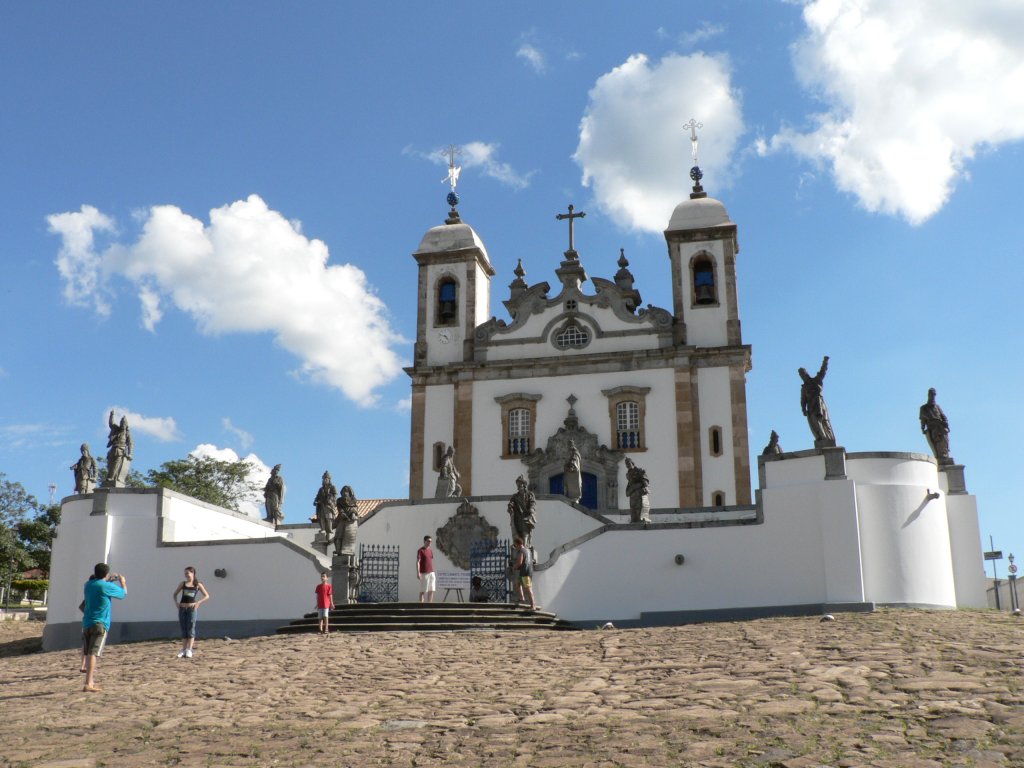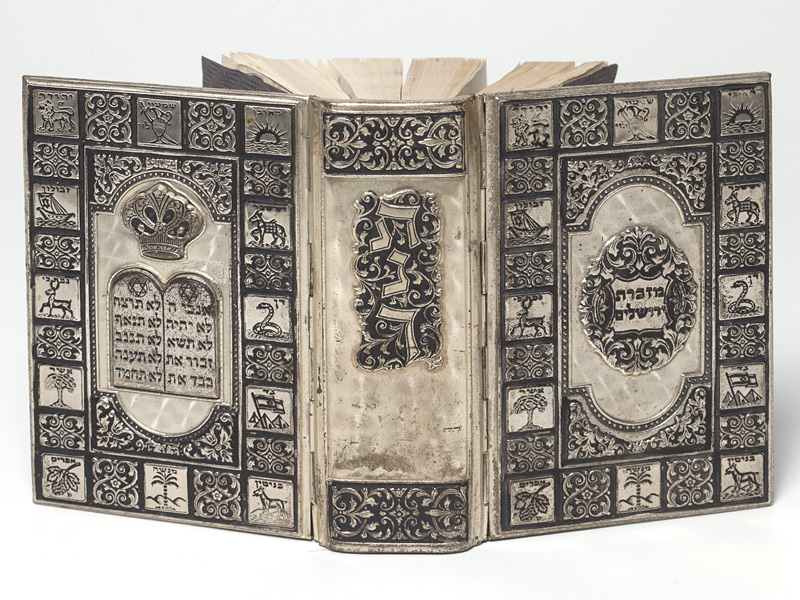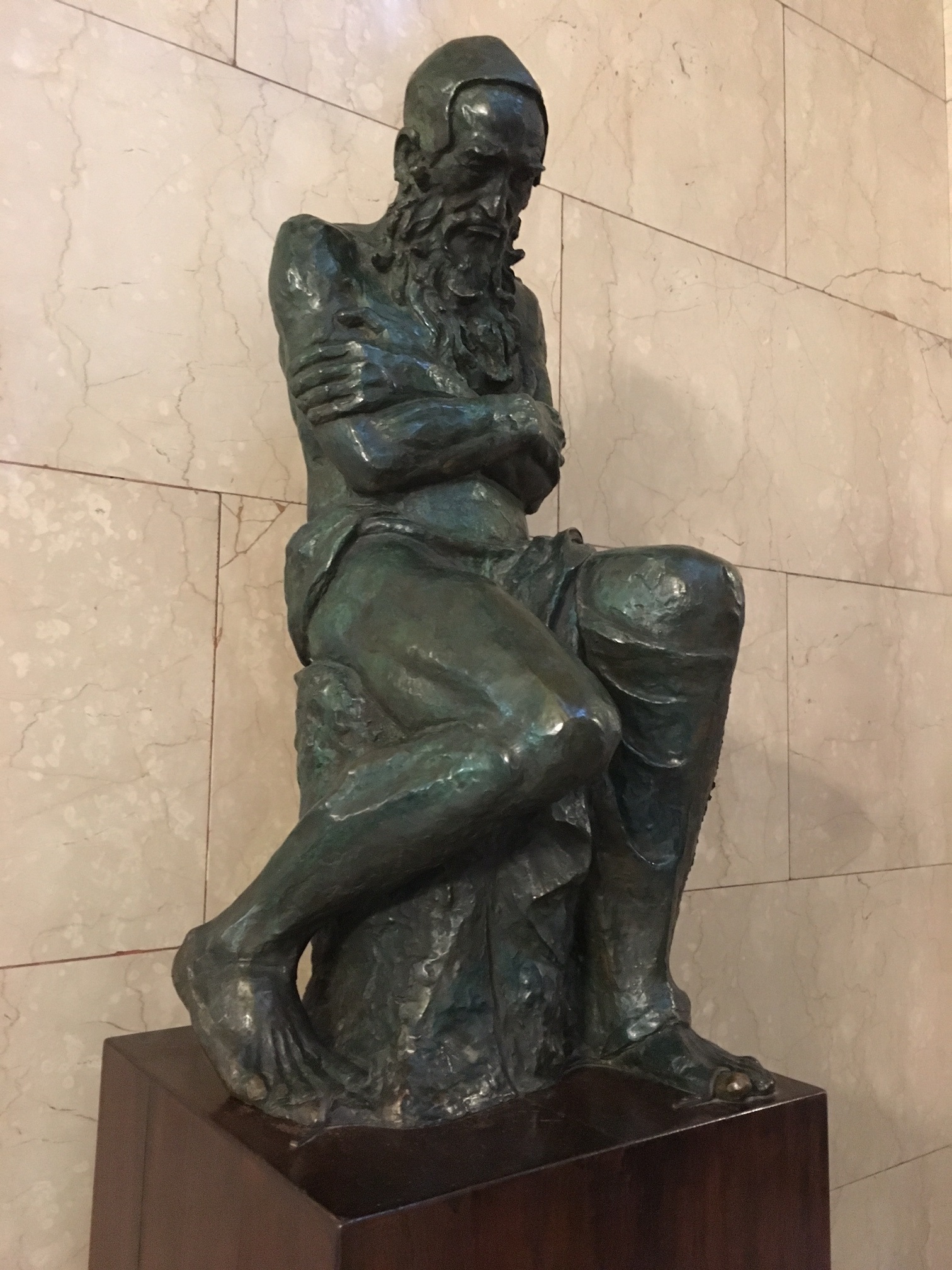|
Twelve Prophets Of Aleijadinho
The ''Twelve Prophets'' are a set of soapstone sculptures completed between 1800 and 1805 by the artist Antônio Francisco Lisboa, commonly known as Aleijadinho. The sculptures are located in the Brazilian municipality of Congonhas, where they adorn the forecourt of the . These sculptures, along with the basilica, were given World Heritage Site status by UNESCO in 1985 because of their extraordinary contribution to Baroque art. The Twelve Prophets Each sculpture in the series commemorates a prophet of the Hebrew Bible. The twelve sculptures do not correspond to the Twelve Minor Prophets, but include some of the Major Prophets and prophets whose works are part of the Old Testament deuterocanon. Each figure holds a scroll with a text, in Latin, from their biblical writings. ''Amazing spirit and power emanates from the heroic figures of the twelve prophets. ...Highly theatrical, the figures show individuality and inner greatness, held fast by the massiveness of their material - ... [...More Info...] [...Related Items...] OR: [Wikipedia] [Google] [Baidu] |
Sanctuary Of Bom Jesus Do Congonhas
A sanctuary, in its original meaning, is a sacred place, such as a shrine. By the use of such places as a haven, by extension the term has come to be used for any place of safety. This secondary use can be categorized into human sanctuary, a safe place for people, such as a political sanctuary; and non-human sanctuary, such as an animal or plant sanctuary. Religious sanctuary ''Sanctuary'' is a word derived from the Latin , which is, like most words ending in , a container for keeping something in—in this case holy things or perhaps cherished people (/). The meaning was extended to places of holiness or safety, in particular the whole demarcated area, often many acres, surrounding a Greek or Roman temple; the original terms for these are ''temenos'' in Greek and ''fanum'' in Latin, but both may be translated as "sanctuary". Similar usage may be sometimes found describing sacred areas in other religions. In Christian churches ''sanctuary'' has a specific meaning, covering p ... [...More Info...] [...Related Items...] OR: [Wikipedia] [Google] [Baidu] |
Old Testament
The Old Testament (often abbreviated OT) is the first division of the Christian biblical canon, which is based primarily upon the 24 books of the Hebrew Bible or Tanakh, a collection of ancient religious Hebrew writings by the Israelites. The second division of Christian Bibles is the New Testament, written in the Koine Greek language. The Old Testament consists of many distinct books by various authors produced over a period of centuries. Christians traditionally divide the Old Testament into four sections: the first five books or Pentateuch (corresponds to the Jewish Torah); the history books telling the history of the Israelites, from their conquest of Canaan to their defeat and exile in Babylon; the poetic and " Wisdom books" dealing, in various forms, with questions of good and evil in the world; and the books of the biblical prophets, warning of the consequences of turning away from God. The books that compose the Old Testament canon and their order and names differ b ... [...More Info...] [...Related Items...] OR: [Wikipedia] [Google] [Baidu] |
Baruch Ben Neriah
Baruch ben Neriah ( he, בָּרוּךְ בֶּן־נֵרִיָּה ''Bārūḵ ben Nērīyyā''; c. 6th century BC) was the scribe, disciple, secretary, and devoted friend of the Biblical prophet Jeremiah. He is traditionally credited with authoring the Book of Baruch. Biography According to Josephus, Baruch was a Jewish aristocrat, a son of Neriah and brother of Seraiah ben Neriah, chamberlain of King Zedekiah of Judah. Baruch became the scribe of the prophet Jeremiah and wrote down the first and second editions of his prophecies as they were dictated to him. Baruch remained true to the teachings and ideals of the great prophet, although like his master he was at times almost overwhelmed with despondency. While Jeremiah was in hiding to avoid the wrath of King Jehoakim, he commanded Baruch to read his prophecies of warning to the people gathered in the Temple in Jerusalem on a day of fasting. The task was both difficult and dangerous, but Baruch performed it without flinchi ... [...More Info...] [...Related Items...] OR: [Wikipedia] [Google] [Baidu] |
Tanakh
The Hebrew Bible or Tanakh (;"Tanach" ''''. : ''Tānāḵh''), also known in Hebrew as Miqra (; : ''Mīqrā''), is the canonical collection of script ... [...More Info...] [...Related Items...] OR: [Wikipedia] [Google] [Baidu] |
Turban
A turban (from Persian دولبند, ''dulband''; via Middle French ''turbant'') is a type of headwear based on cloth winding. Featuring many variations, it is worn as customary headwear by people of various cultures. Communities with prominent turban-wearing traditions can be found in the Indian subcontinent, Southeast Asia, the Arabian Peninsula, the Middle East, the Balkans, the Caucasus, Central Asia, North Africa, West Africa, East Africa, and amongst some Turkic peoples in Russia as well as Ashkenazi Jews. A keski is a type of turban, a long piece of cloth roughly half the length of a traditional "single turban", but not cut and sewn to make a double-width "Double Turban" (or Double Patti). Wearing turbans is common among Sikh men, and infrequently women. They are also worn by Hindu monks. The headgear also serves as a religious observance, including among Shia Muslims, who regard turban-wearing as ''Sunnah mu’akkadah'' (confirmed tradition). The turban is also the tr ... [...More Info...] [...Related Items...] OR: [Wikipedia] [Google] [Baidu] |
Byzantine
The Byzantine Empire, also referred to as the Eastern Roman Empire or Byzantium, was the continuation of the Roman Empire primarily in its eastern provinces during Late Antiquity and the Middle Ages, when its capital city was Constantinople. It survived the fragmentation and fall of the Western Roman Empire in the 5th century AD and continued to exist for an additional thousand years until the fall of Constantinople to the Ottoman Empire in 1453. During most of its existence, the empire remained the most powerful economic, cultural, and military force in Europe. The terms "Byzantine Empire" and "Eastern Roman Empire" were coined after the end of the realm; its citizens continued to refer to their empire as the Roman Empire, and to themselves as Romans—a term which Greeks continued to use for themselves into Ottoman times. Although the Roman state continued and its traditions were maintained, modern historians prefer to differentiate the Byzantine Empire from Ancient Rome a ... [...More Info...] [...Related Items...] OR: [Wikipedia] [Google] [Baidu] |
Biblical Canon
A biblical canon is a set of texts (also called "books") which a particular Jewish or Christian religious community regards as part of the Bible. The English word ''canon'' comes from the Greek , meaning " rule" or "measuring stick". The use of the word "canon" to refer to a set of religious scriptures was first used by David Ruhnken, in the 18th century. Various biblical canons have developed through debate and agreement on the part of the religious authorities of their respective faiths and denominations. Some books, such as the Jewish–Christian gospels, have been excluded from various canons altogether, but many disputed books are considered to be biblical apocrypha or deuterocanonical by many, while some denominations may consider them fully canonical. Differences exist between the Hebrew Bible and Christian biblical canons, although the majority of manuscripts are shared in common. Different religious groups include different books in their biblical canons, in varying ... [...More Info...] [...Related Items...] OR: [Wikipedia] [Google] [Baidu] |
Book Of Jeremiah
The Book of Jeremiah ( he, ספר יִרְמְיָהוּ) is the second of the Latter Prophets in the Hebrew Bible, and the second of the Prophets in the Christian Old Testament. The superscription at chapter Jeremiah 1:1–3 identifies the book as "the words of Jeremiah son of Hilkiah". Of all the prophets, Jeremiah comes through most clearly as a person, ruminating to his scribe Baruch about his role as a servant of God with little good news for his audience. His book is intended as a message to the Jews in exile in Babylon, explaining the disaster of exile as God's response to Israel's pagan worship: the people, says Jeremiah, are like an unfaithful wife and rebellious children, their infidelity and rebelliousness made judgment inevitable, although restoration and a new covenant are foreshadowed. Authentic oracles of Jeremiah are probably to be found in the poetic sections of chapters 1 –25, but the book as a whole has been heavily edited and added to by the prophet's f ... [...More Info...] [...Related Items...] OR: [Wikipedia] [Google] [Baidu] |
Jeremiah
Jeremiah, Modern: , Tiberian: ; el, Ἰερεμίας, Ieremíās; meaning " Yah shall raise" (c. 650 – c. 570 BC), also called Jeremias or the "weeping prophet", was one of the major prophets of the Hebrew Bible. According to Jewish tradition, Jeremiah authored the Book of Jeremiah, the Books of Kings and the Book of Lamentations, with the assistance and under the editorship of Baruch ben Neriah, his scribe and disciple. In addition to proclaiming many prophecies of Yahweh, the God of Israel, the Book of Jeremiah goes into detail regarding the prophet's private life, his experiences, and his imprisonment. Judaism and Christianity both consider the Book of Jeremiah part of their canon. Judaism regards Jeremiah as the second of the major prophets. Christianity holds him to be a prophet and his words are quoted in the New Testament. Islam also regards Jeremiah as a prophet and his narrative is recounted in Islamic tradition. Biblical narrative Chronology Je ... [...More Info...] [...Related Items...] OR: [Wikipedia] [Google] [Baidu] |
Congonhas Sanctuary Of Bom Jesus Statues 2
Congonhas (Congonhas do Campo until 1948) is a historical Brazilian city located in the state of Minas Gerais. It is situated south from Belo Horizonte, the capital of state of Minas Gerais, by the highway BR-040. As of 2020, the city had a population of 55,309. It is a well preserved historic city and retains the characteristics of a baroque city, with its churches, buildings and museums. Other historical cities in Minas Gerais are Ouro Preto, São João del-Rei, Diamantina, Mariana, Tiradentes and Sabará Sabará is a Brazilian municipality located in the state of Minas Gerais. The city belongs to the Belo Horizonte metropolitan region and to the associated microregion. It is a well preserved historic city and retains the characteristics of a .... Sanctuary of Bom Jesus de Matosinhos The city is known for its basilica - the , commissioned by Portuguese adventurer and miner Feliciano Mendes in 1757 and completed in 1775. In the ramped Courtyard, forecourt of the bas ... [...More Info...] [...Related Items...] OR: [Wikipedia] [Google] [Baidu] |
Studio
A studio is an artist or worker's workroom. This can be for the purpose of acting, architecture, painting, pottery (ceramics), sculpture, origami, woodworking, scrapbooking, photography, graphic design, filmmaking, animation, industrial design, radio or television production broadcasting or the making of music. The term is also used for the workroom of dancers, often specified to dance studio. The word ''studio'' is derived from the , from , from ''studere'', meaning to study or zeal. The French term for studio, ''atelier'', in addition to designating an artist's studio is used to characterize the studio of a fashion designer. ''Studio'' is also a metonym for the group of people who work within a particular studio. :uz:Studiya Art studio The studio of any artist, especially from the 15th to the 19th centuries, characterized all the assistants, thus the designation of paintings as "from the workshop of..." or "studio of..." An art studio is sometimes called an atelier, ... [...More Info...] [...Related Items...] OR: [Wikipedia] [Google] [Baidu] |








